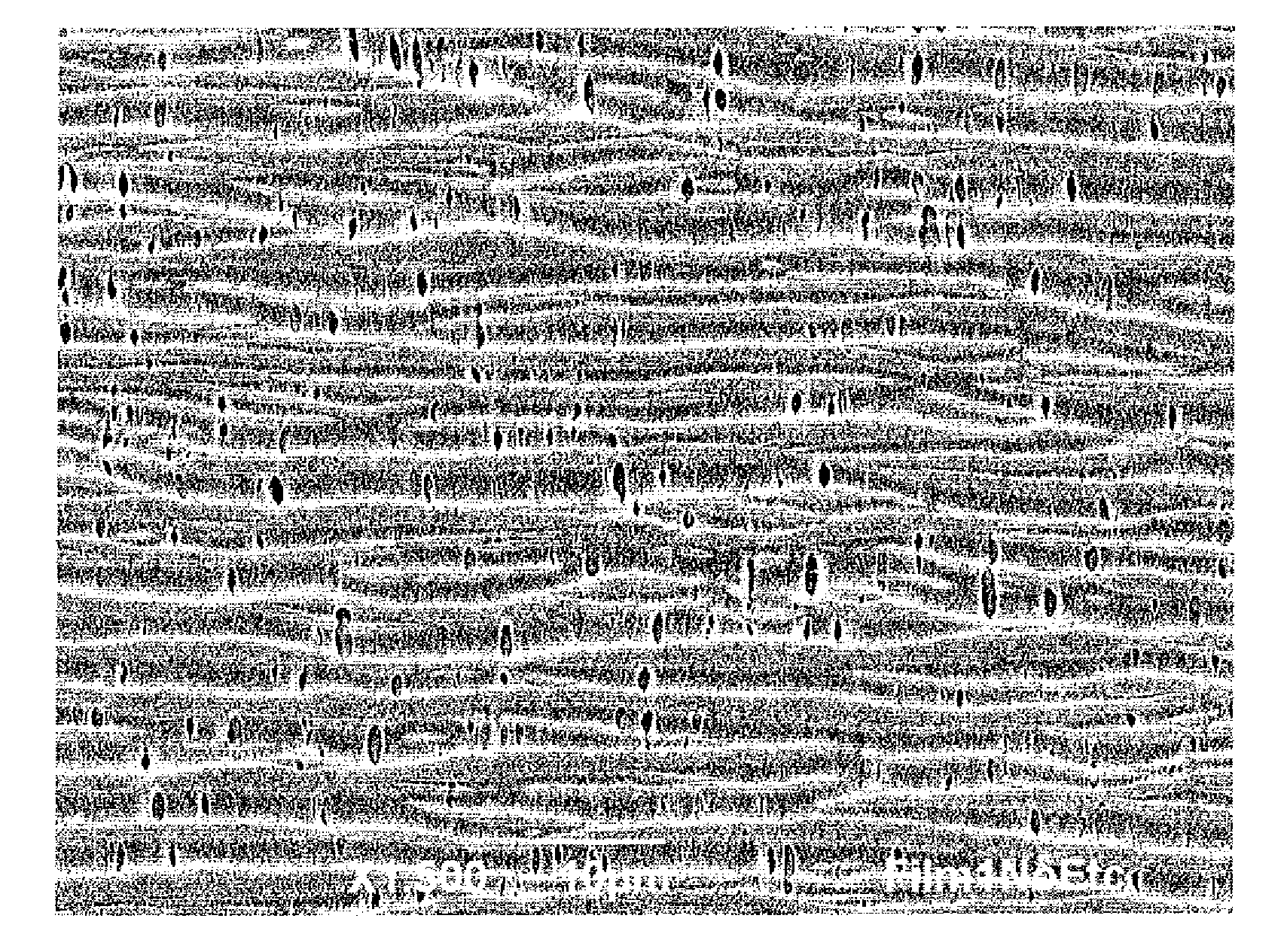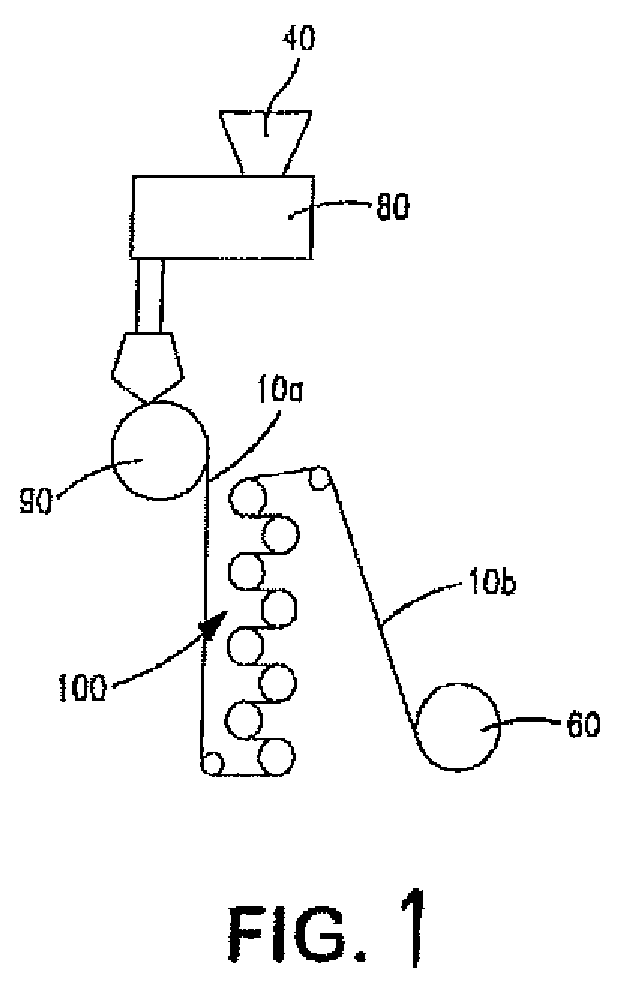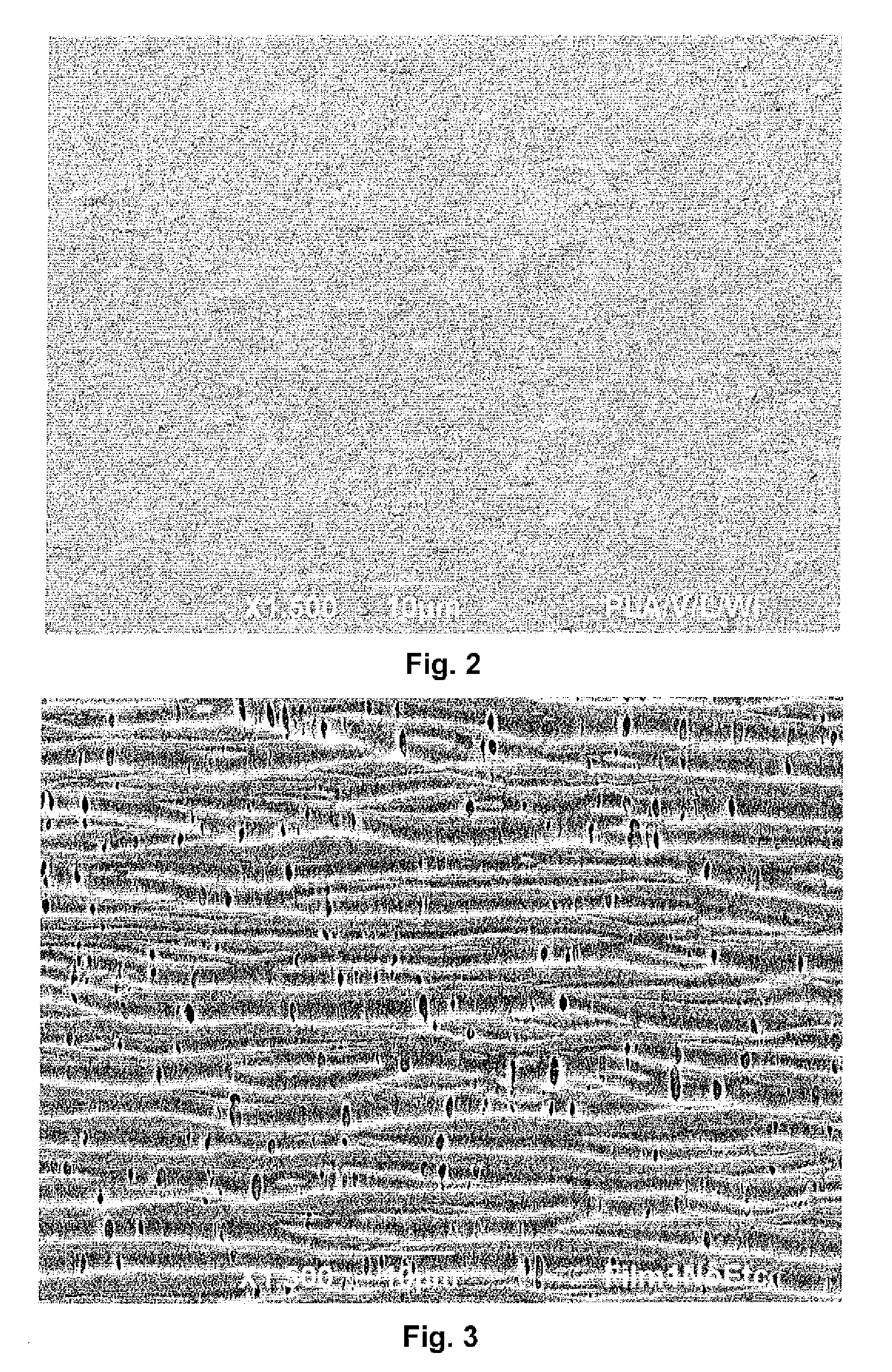Renewable polyester film having a low modulus and high tensile elongation
a polyester film and modulus technology, applied in the field of renewable polyester film having a low modulus and high tensile elongation, can solve the problems of noisy rustling, problematic use of renewable polymers in such films,
- Summary
- Abstract
- Description
- Claims
- Application Information
AI Technical Summary
Problems solved by technology
Method used
Image
Examples
example 1
[0103]Films formed from 100% polylactic acid (PLA) were formed as a control by extruding PLA 6201 D (Natureworks®, melt flow rate of 10 g / 10 minutes at 190° C.) into a film. The pellets were flood fed into a Rheomix 252 signal screw extruder with a L / D ratio of 25:1 that was heated to a temperature of about 208° C. where the molten blend exited through 6 inch width cast film die and drawn via a Haake take-up roller to a film thickness ranging from 41.9 μm to 48.3 μm.
example 2
[0104]The ability to form films from a blend of 88.7 wt. % polylactic acid (PLA 6201 D, Natureworks®) 9.9 wt. % of a toughening additive and 1.4% polyepoxide modifier was demonstrated. The toughening additive was Vistamaxx™ 2120 (ExxonMobil), which is a polyolefin copolymer / elastomer with a melt flow rate of 29 g / 10 min (190° C., 2160 g) and a density of 0.866 g / cm3. The polyepoxide modifier was poly(ethylene-co-methyl acrylate-co-glycidyl methacrylate) (Lotader® AX8950, Arkema) having a melt flow rate of 70 to 100 g / 10 min (190° C. / 2160 g), a glycidyl methacrylate content of 7 to 11 wt. %, methyl acrylate content of 13 to 17 wt. %, and ethylene content of 72 to 80 wt. %. The polymers were fed into a co-rotating, twin-screw extruder (ZSK-30, diameter of 30 mm, length of 1328 millimeters) for compounding that was manufactured by Werner and Pfleiderer Corporation of Ramsey, N.J. The extruder possessed 14 zones, numbered consecutively 1-14 from the feed hopper to the die. The first bar...
example 3
[0105]Films were formed as described in Example 2, except that the blend contained 85.3 wt. % polylactic acid (PLA 6201 D, Natureworks®), 9.5 wt. % of toughening additive Vistamaxx™ 2120 (ExxonMobil), 1.4 wt. % polyepoxide modifier (Lotader® AX8950, Arkema), and 3.8 wt. % internal interfacial modifier (PLURIOL® WI 285 Lubricant Basestock from BASF). The PLURIOL® W1285 was added via injector pump into barrel zone #2. Films were drawn to a thickness ranging from 38.1 μm to 45.7 μm. SEM photomicrographs were taken of Example 3 before and after testing. The results are shown in FIGS. 2-3. As shown, the PLA matrix of Example 3 underwent debonding, which resulted in the formation of a plurality of voids adjacent to discrete domains of the Vistamaxx™ polymer.
PUM
| Property | Measurement | Unit |
|---|---|---|
| glass transition temperature | aaaaa | aaaaa |
| glass transition temperature | aaaaa | aaaaa |
| tensile elongation at break | aaaaa | aaaaa |
Abstract
Description
Claims
Application Information
 Login to View More
Login to View More - R&D
- Intellectual Property
- Life Sciences
- Materials
- Tech Scout
- Unparalleled Data Quality
- Higher Quality Content
- 60% Fewer Hallucinations
Browse by: Latest US Patents, China's latest patents, Technical Efficacy Thesaurus, Application Domain, Technology Topic, Popular Technical Reports.
© 2025 PatSnap. All rights reserved.Legal|Privacy policy|Modern Slavery Act Transparency Statement|Sitemap|About US| Contact US: help@patsnap.com



